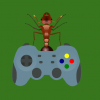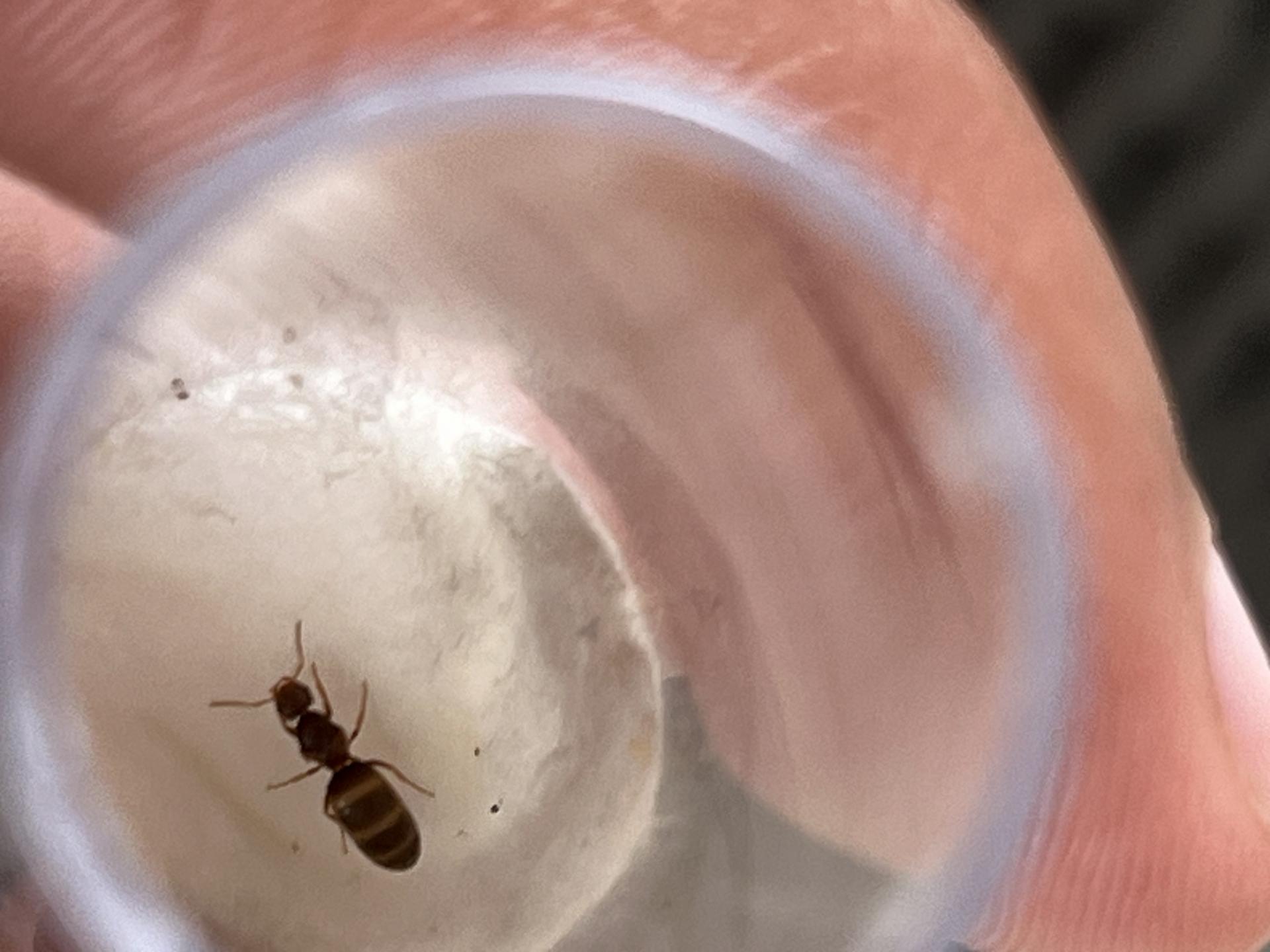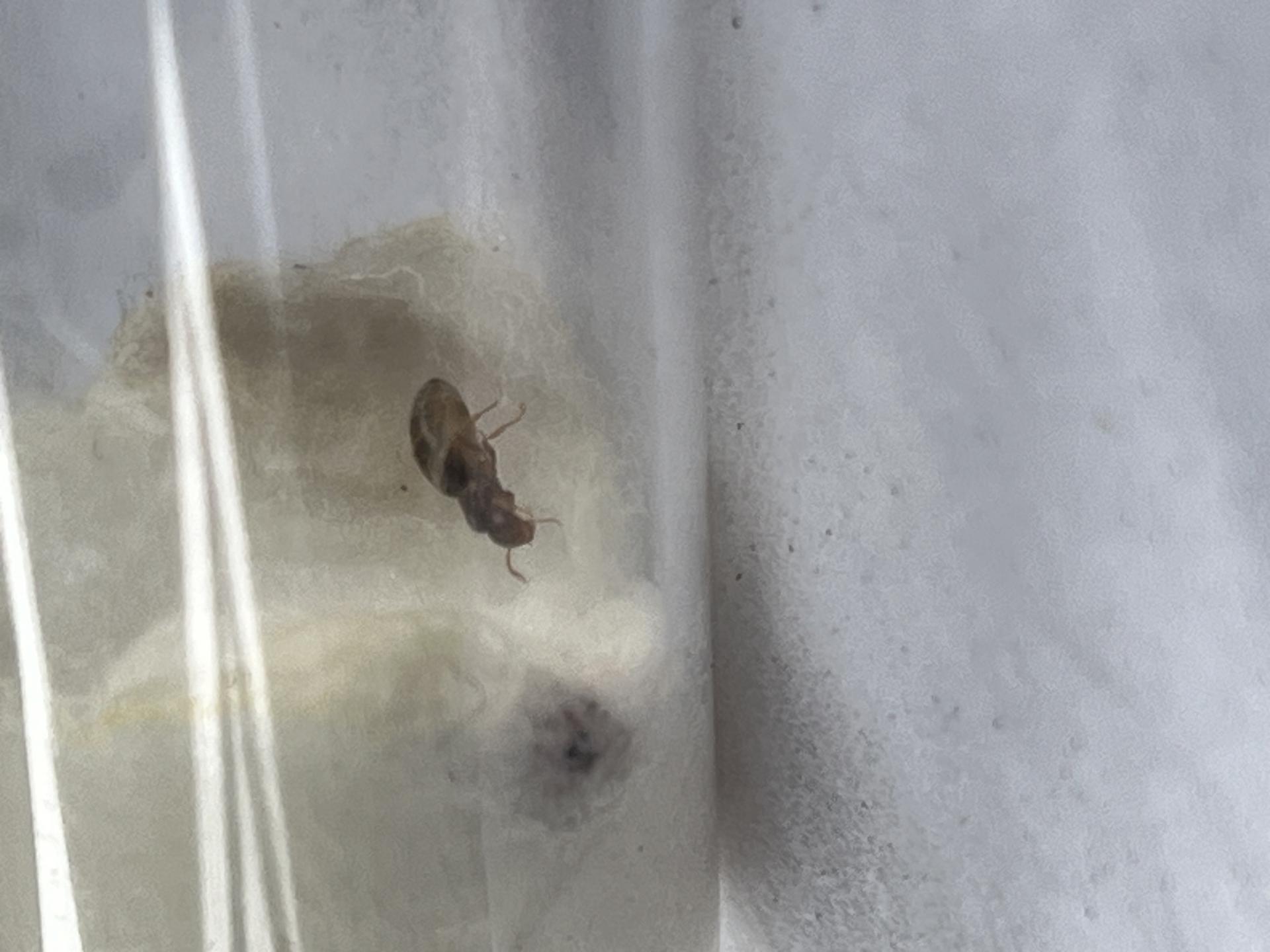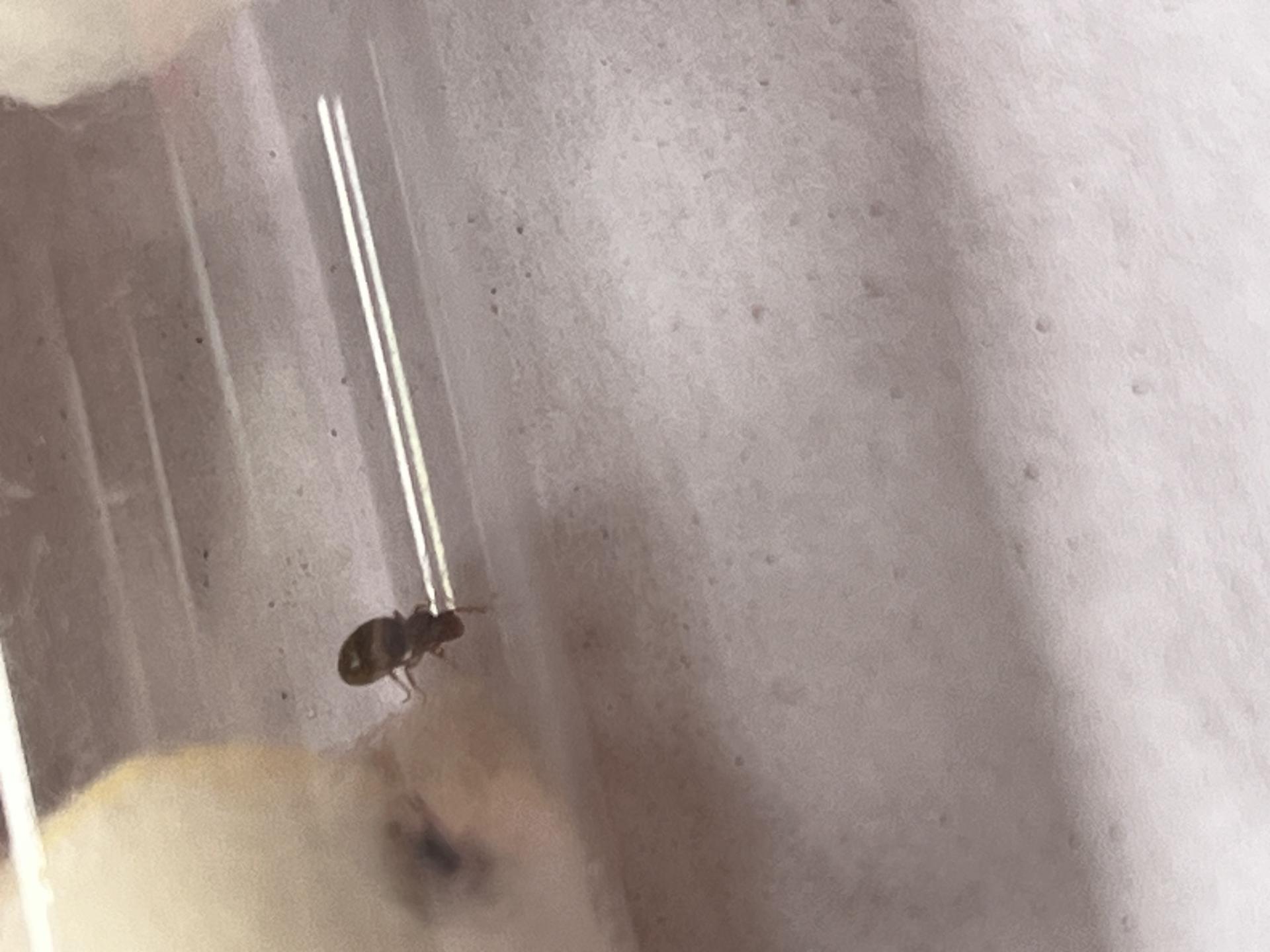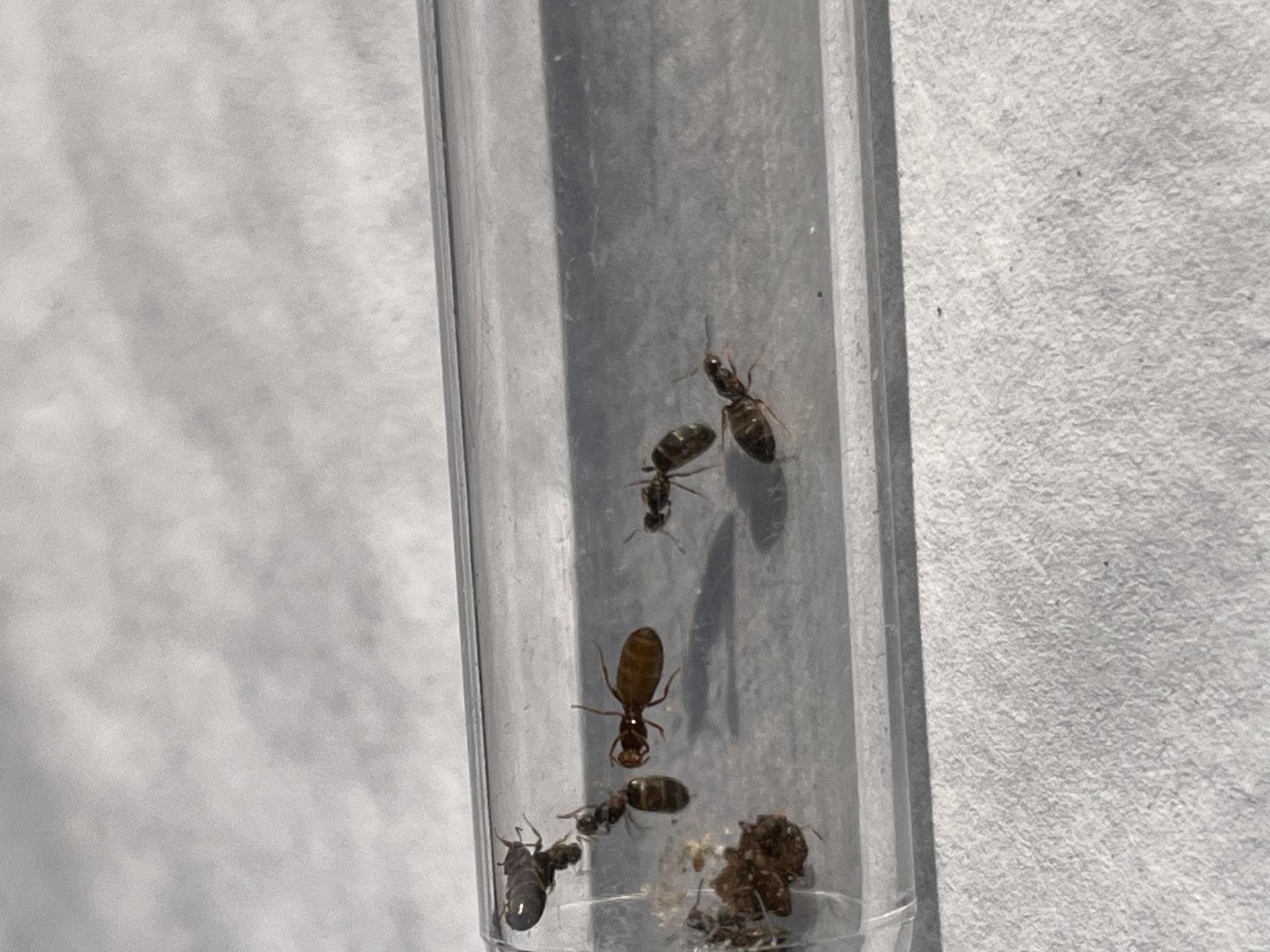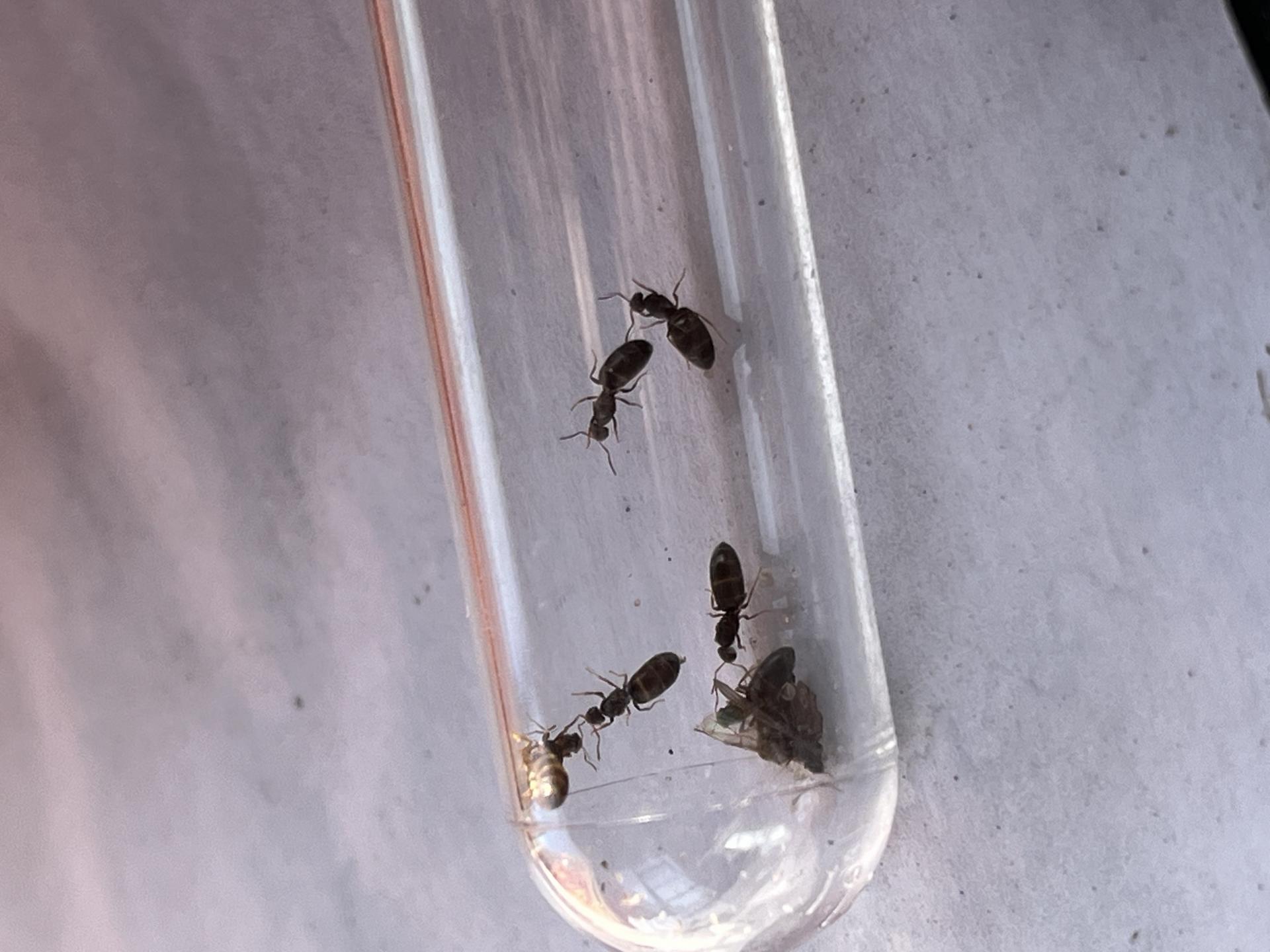Location: Apopka, Florida, USA.
Time: The queen was caught on May, 15th, 2024, at ~7:45
Habitat: First queen was found on the sidewalk in front of my house, which is near a grassy field. Second (pictured) queen was walking between my wall and my lawn (essentially, a field) when she was ambushed by some Tapinoma sessile workers. I rescued the queen, and placed her in a test tube set-up.
Length: 6 - 7 millimeters.
Appearance: Queens are a grayish-brown, which I'd compare to the bark of a light pine tree. The gaster has tan-colored stripes, which are quite thick, although I do not have a measurement on them.
Behavior: Typical queen behavior, to sum it up. The queen (I only kept one, and released the other) was skitish and elusive when first found, but calmed down in a test-tube set-up, and refused to move off the cotton, or really move at all, just turning around to check out what's behind her at times.
Edited by The_Gaming-gate, May 15 2024 - 11:58 AM.


